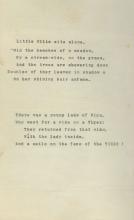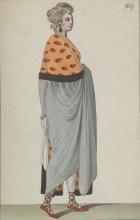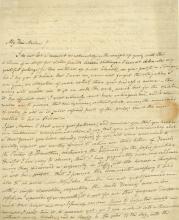Lewis Carroll’s Typewriter
Submitted by Sal Robinson on Fri, 08/24/2018 - 1:24pmOne of the questions my co-cataloguer on the Levy Project, Pam Abernathy, and I pose as we work our way through the collection of letters and manuscripts in the Morgan’s holdings is: how was it made? In most cases, it’s not complicated: the letter was written by hand, by the person who was responsible for its content. But in the case of MA 6390.3, a small scrap of paper that forms part of the Morgan’s large Lewis Carroll collection, matters were not so clear.










